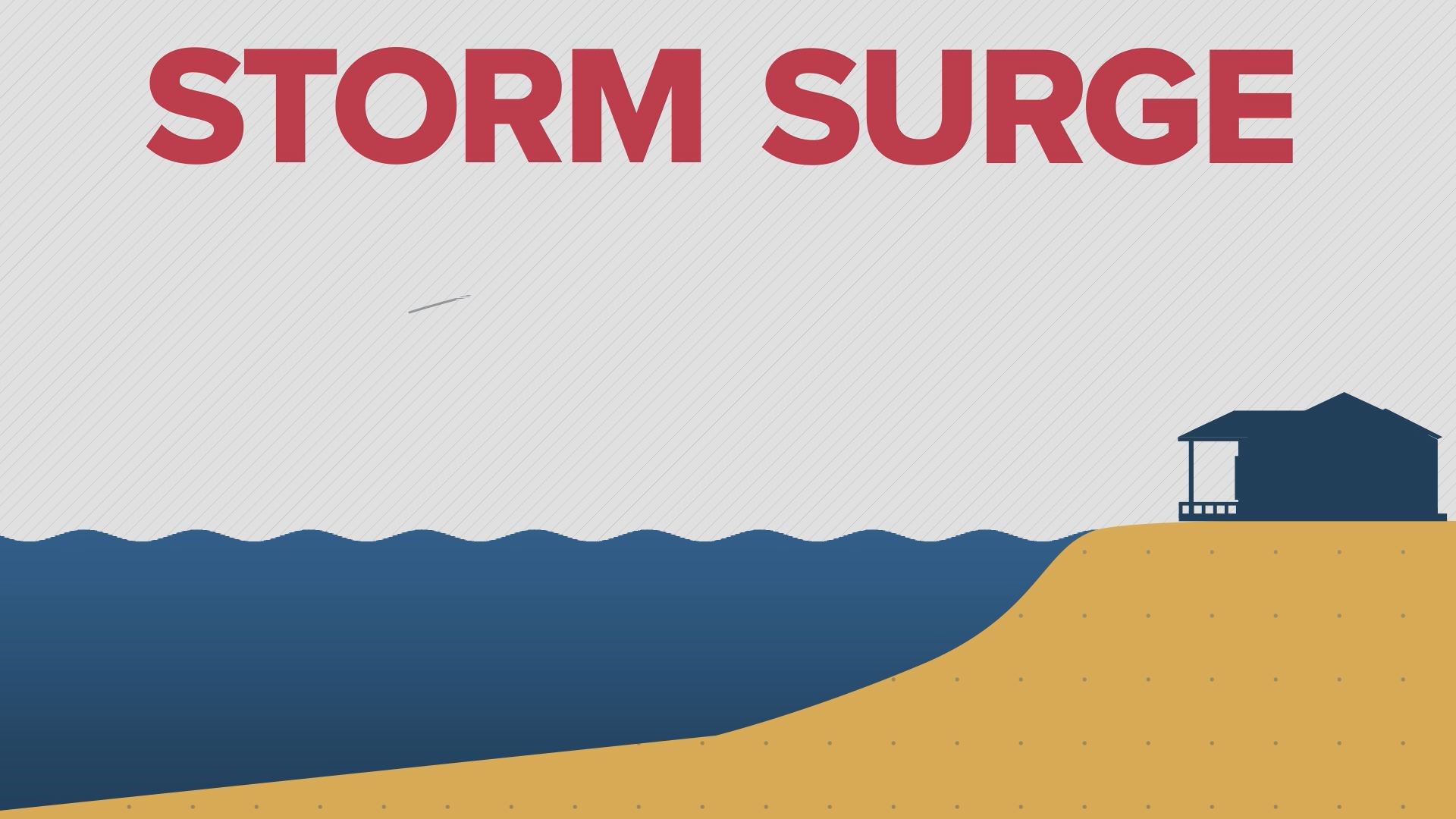TAMPA, Fla. — As Elsa approaches Florida's Gulf Coast, storm surge is expected to be one of its major factors, with up to 5 feet of surge expected in the Tampa Bay area.
Storm surge is, at its most basic, an abnormal rise in water generated by a storm. That's why it's a major risk for the Tampa Bay area during hurricane season, especially for those living on the coast.
Because of the city's proximity to the bay and surrounding coastline, there is more danger that storm surge will raise water levels to areas inhabited by people, causing dangerous and possibly deadly conditions.
In fact, a study from 2015 named Tampa as the most vulnerable city in the U.S. when it comes to storm surge.
The coastal shelf along the Gulf is wide and relatively shallow, meaning more surge can build up, and Tampa Bay itself acts as a sort of funnel to raise water levels. In addition, a majority of the population near Tampa and St. Petersburg live at elevations below 10 feet.
Those conditions include flooding roadways, debris being carried by the surge and property damage from incoming water.
In fact, despite the focus on maximum wind speed and gusts for hurricanes and tropical storms that approach Florida, water and storm surge are among the deadliest forces a storm can produce.
Storm surge can't be quantified beforehand in the same way a hurricane's strength can be measured by wind speeds.
The National Weather Service doesn't have a storm surge scale because local factors, such as water depth along the coast, have an outsized impact on storm surge, meaning that a weaker storm in a shallower area could have a higher surge.
For example, according to the NWS, 2008's Hurricane Ike would have produced about eight feet of storm surge if it had landed near Palm Beach. Instead, it made landfall along the upper Texas coast, bringing storm surge of up to 20 feet to the much shallower waters.
Overnight into Wednesday is when the highest storm surge is expected to hit after the worst of the storm has passed to the north. That storm surge is expected to be from 3-5 feet.
Ahead of Elsa, residents should secure outdoor objects or bring them inside, and remove damaged or dead trees and limbs, which can be knocked into the water by a storm's high winds.

